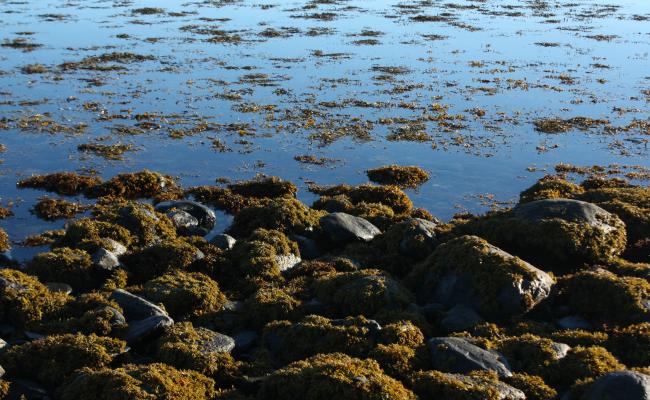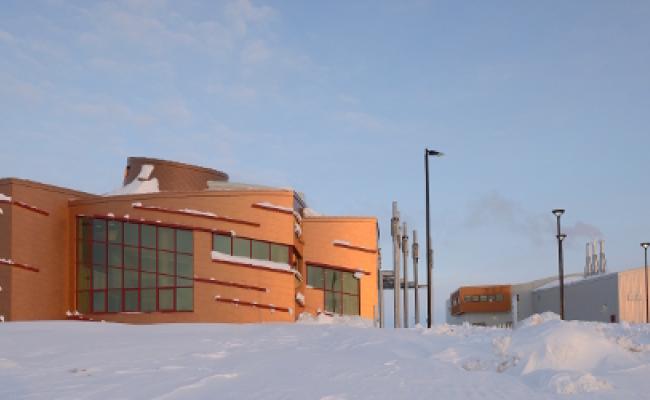Arctic Ocean Acidifies Up To Four Times Faster Than Other Seas

Iceberg floating in the Arctic Ocean. (Source: AWeith under CC BY-SA 4.0)
A new peer-reviewed study published in Science concludes that parts of the Arctic Ocean are absorbing CO2 at a shockingly high rate up to four times faster than other oceans. The researchers correlate this rapid acidification to the melt of sea ice.
The Arctic Ocean is commonly considered a bellwether for how climate change and rising temperatures are affecting the planet and its ecosystem. Research has long suggested that the Arctic is warming at around four times the rate of the rest of the planet.
A new study by researchers at the Polar and Marine Research Institute at Jimei University, China, and the School of Marine Science and Policy at the University of Delaware in the US, now adds another dimension to how the changing climate is affecting the region, suggesting that large parts of the Arctic Ocean have been absorbing CO2 up four times faster than the global oceans.
Researchers identified sea ice loss as the primary cause for this development and outlined several mechanisms through which the ocean absorbs CO2 at an accelerated rate as the ice melts.
The study uses data sets derived from 47 Arctic research voyages between 1994 and 2020 to examine how sea ice loss and increased CO2 in the atmosphere have resulted in enhanced acidification in the Arctic.
Sea ice used to protect the ocean
The study finds a strong correlation between sea ice loss and increased acidification. While historically sea ice covered much of the Arctic Ocean year-round, this began to change in the early 2000s as ice began to retreat rapidly during the summer months. As sea ice melts more open water is exposed to the atmosphere and begins to absorb CO2.
"Clearly, massive sea ice retreat [...] has played a critical role in the fast acidification in the Arctic Ocean over the past two to three decades,” the researchers say.
The increase in CO2 absorption was greatest during the decade from 2000-2010, which saw a severe decline in summer sea ice. Acidification continued in the time frame from 2011-2020 albeit at a slower pace as sea ice coverage stabilized somewhat, though accompanied by large interannual fluctuations.
The uptake of CO2 into the Polar region was especially rapid as the Arctic Ocean had been “lagging behind” in terms of acidification.
This results in additional uptake of the gas from the atmosphere.
While global oceans have been exposed to rising CO2 levels in the atmosphere for several decades and thus began absorbing parts of that additional CO2 – leading to increasing ocean acidification, which among other effects has had a detrimental impact on coral reefs – sea ice had somewhat shielded the Arctic Ocean.
“We found that, under partially or newly ice-free conditions, [waters with low absorbed CO2] that were originally under the ice were exposed to higher atmospheric [CO2] and rapidly took up CO2 through air-sea gas exchange. In other words, the initial CO2 deficit resulted in a CO2 increase “boost” over that time period,” the study explains.
Leading to more absorption
In addition to acidification as the result of the protective “blanket” of sea ice being removed, the dilution of sea water with melting sea ice also further enhances the Arctic Ocean’s ability to absorb CO2. Sea ice that melts and enters the ocean reduces “the buffering capacity of the water” or its ability to resist acidification.
This results in additional uptake of the gas from the atmosphere.
Around half of the total CO2 absorption comes as a result of fresh “unsaturated” sea water entering the ocean as the ice melts. “The indirect effect of dilution on the seawater carbonate system through the promotion of CO2 uptake is an important factor driving acidification.”
The study concludes that acidification will be greatly amplified during summer months, when large swaths of the Arctic Ocean are no longer covered by sea ice, and during times of greatest sea ice decline.
The trend of “ice melt–driven CO2 acidification” is likely to continue and become more pronounced over the next few decades until summer sea ice has disappeared completely.
As to what the impact of rapid acidification on marine life in the Arctic Ocean will be, the study’s authors call on their colleagues in related fields to begin investigating the issue.



